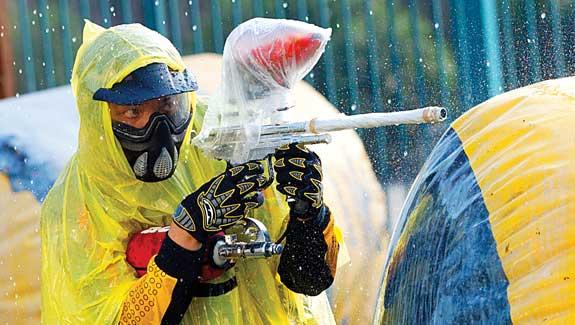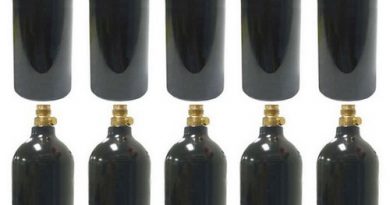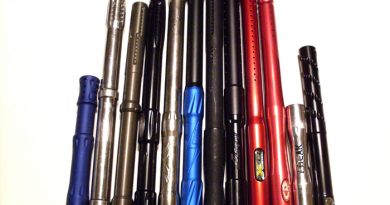Best bad weather paintball barrels
What if we conducted a barrel test with mediocre markers, horrible paint, horrible weather conditions, unreliable air supply, and great barrels?
That’s exactly what we did. We took a stock Tippmann Model 98, using CO2, and tested two great barrels in terrible weather conditions.
Weather:
It was a very windy situation. The wind was blowing our data sheets away, but thanks to the chronograph that was sitting on our notebooks, we were able to save some of the results. The temperature varied, but was around 58 degrees all day. The wind made it seem more like 45 degrees.
Location:
Mike Gomez and the people from Michigan Paintball were kind enough to lend us the target range and the chronograph. Thanks!
Marker:
One new Model 98 by Tippmann. All stock, only the barrels were replaced.
Barrels:
The Lapco Bigshot 12″ barrel versus the Dye SS 10″ barrel. We really appreciate Oh Pawlak and Predator Paintball for cutting us a deal on these barrels. Thanks!
Air supply:
A 20 ounce CO2 bottle that attached to the end of the marker. No fancy expansion chambers, no bottomlines, no regulators, nothing. Just a plain old CO2 bottle.
Paintballs:
We mixed Midnight by Diablo with some older paint and concocted a great “horrible” paint mixture. We made sure that the paint did not particularly match the barrel bore sizes. We also made sure that the Midnight was not specifically recommended by either barrel manufacturer.
Test:
To put it simply, we put these barrels through a hellified experience. Nothing was in favor of the barrels. We designed this test to see how the barrels would perform under the worse possible conditions ever. All we needed was a little rain, but that didn’t happen.
We tested the barrels at Michigan Paintball’s target range at two different distances. The initial distance was at 25 feet. The second distance that the barrels were tested at was at 35 feet away. Anything further was just not producing any measurable results. Outliers were recorded as well as any malfunctions or mishaps.
An outlier is a paintball that was so far off the mark, that it would really skew the results of the test if it were included. For example, if all the paintballs landed nicely in a 5 inch circle, but one ended up in China, that one would be eliminated, but recorded as an outlier. Now on to the results!
Results:
The Lapco Bigshot was firing the paintballs out at speeds as low as 262 fps and as high as 295 fps. Obviously, with the CO2 these types of fluctuations are expected.
The Dye SS was firing paintballs out at 259 fps to 274 fps, which makes it a little more consistent. But due to the crudeness and variability of the test, no conclusions should be made.
At 25 feet the Lapco shot a radius of 12″ and double fed once. While the Dye SS shot a radius of only 7″ and did not double feed. No outliers were recorded.
At 35 feet the Lapco recorded a radius of 2.5 feet and had numerous outliers all over the place. The Dye, on the other hand, plastered a radius of 20 inches with only two outliers.
Summary Table:
| Barrel | 25 feet | 35 feet | Outliers |
| Lapco | 12 “ | 30″ | 4 |
| Dye | 7″ | 20″ | 2 |
Editor’s Choice:
First of all, if you have the choice, don’t use these barrels in such horrible conditions. Secondly, match your paint size to your barrel size (see our technical data sheets).
As for these two barrels, both are excellent pieces of work. Both are well made, get the job done (in the proper conditions), and are pleasant to the eye.
Overall, the Dye seemed to work better in these types of conditions. The Dye SS easily beat out the Lapco in this grueling test. The Lapco was hysteric and very unpredictable. One of our editor’s even said, “I’d hate to have to play like this”, in reference to the poor performance by the Lapco.
Of course, we never hope to play when the paint is off balance, or the wind is blowing you off your feet, or if it starts to get cold, while shooting CO2. But if we do have to play in such conditions, it’s nice to know that there is a a barrel we can “sorta” depend on.




